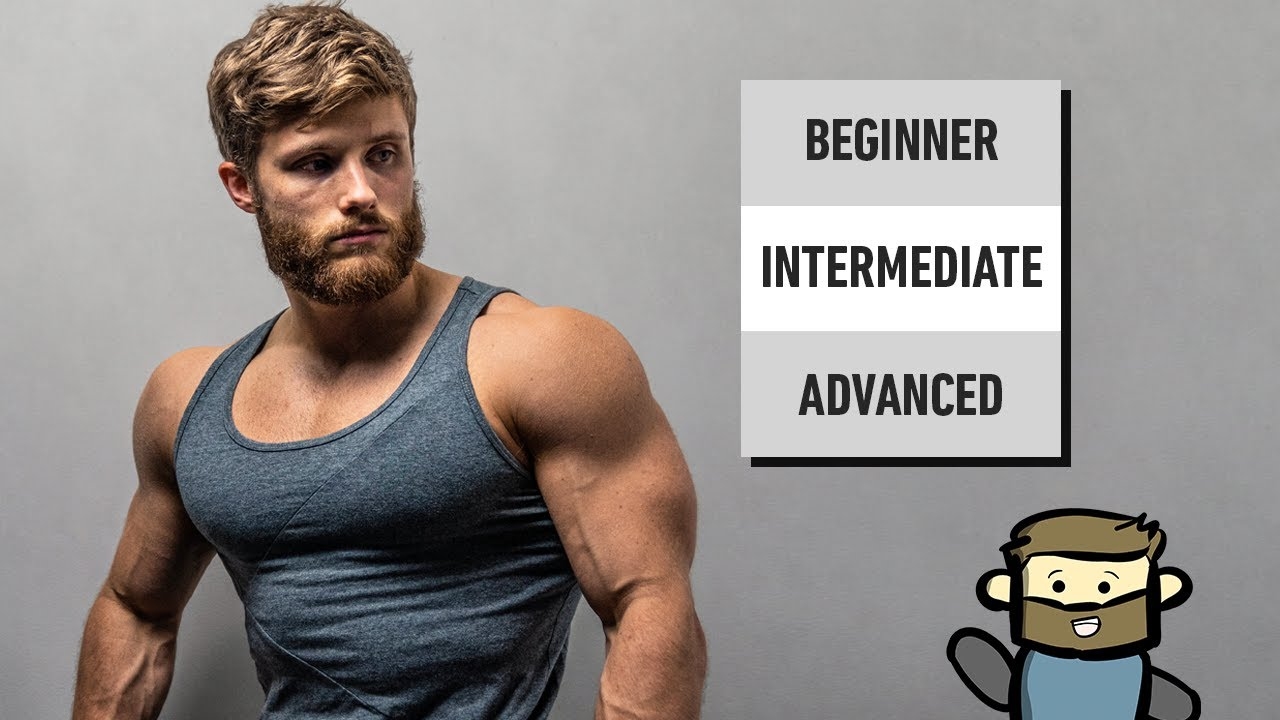How to Keep Building Muscle at Every Level of Lifting Experience
Whether you’re just starting your fitness journey or you’ve been lifting for over a decade, the path to gaining muscle never stays the same. As your experience grows, so does the complexity of your training. What worked for you on day one won’t work forever—and that’s a good thing. Progress requires adaptation.
In this article, we’ll break down exactly what you need to do at the beginner, intermediate, and advanced stages of training to keep making consistent muscle-building progress.

Nutrition: The Foundation That Never Changes
Before diving into workout strategies, let’s quickly touch on diet—because no matter your training level, fueling your body properly is essential.
- Caloric Intake: To build muscle, you generally want to eat more than your maintenance calories—around 10–20% above is a solid target. If you’re trying to lose fat, the reverse applies: a 10–20% calorie deficit helps shed pounds while preserving lean mass.
- Protein: Aim for 1.6 to 2.2 grams of protein per kilogram of body weight each day. This is the optimal range for maximizing muscle protein synthesis, regardless of your level.
Beginners: Focus on Mastery and Momentum
The first year or two of training is where many lifters experience the fastest gains. This period—often called the “newbie gains” phase—is when your body is most responsive to stimulus. But you have to lay the groundwork properly.
1. Learn and perfect technique.
Don’t rush to lift heavy. Spend time mastering the correct form on foundational movements like squats, bench press, deadlifts, rows, and overhead presses. This ensures that you’re targeting muscles efficiently and reducing injury risk.
2. Embrace linear progression.
In this phase, you can increase weight on your main lifts nearly every week. Choose a few key exercises and gradually add load each session while keeping reps steady—typically in the 6–12 range. For example, if you’re benching 45 pounds for 6 reps in week one, aim for 50 in week two, and so on.
3. Understand effort and failure.
While you don’t need to train to complete failure early on, it’s important to start learning what failure actually feels like. This helps develop the internal gauge you’ll need later when training intensity becomes a more critical variable.

Intermediate Lifters: Train Smarter, Not Just Harder
After 1–2 years of consistent training, most lifters find that progress begins to slow. This is normal, but to keep growing, you’ll need a more sophisticated approach.
1. Progressive overload evolves.
Adding weight each session becomes unsustainable. Instead, use strategies like:
- Rep cycling: Add reps before adding weight (e.g., work from 6 to 8 reps, then increase the load and reset to 6).
- Set additions: Only after reps and weight stall, add an additional set—but do this sparingly, as increased volume has a higher recovery cost.
Aim for 10–20 working sets per muscle group per week, adjusting based on recovery and progress.
2. Rotate exercises strategically.
Sticking to the same exercises forever can cause plateaus. Instead, rotate variations every 4–8 weeks, especially for isolation movements. For example, swap seated lateral raises for cable lateral raises, or use incline dumbbell curls instead of barbell curls. This prevents overuse injuries and stimulates growth through new mechanical stress.
3. Fine-tune intensity.
You should now be proficient in knowing what failure feels like. Most of your compound lifts should stop 1–3 reps shy of failure. For isolation movements, especially the last set, training to failure can be beneficial. This balance optimizes gains while managing fatigue.
Advanced Lifters: Chase Precision and Personalization
Once you’ve been training consistently for 4–5 years or more, your rate of muscle gain slows to a crawl—perhaps just 1–2 pounds of muscle per year for men, and 0.5–1 pound for women. That’s when small details make a big difference.
1. Specialization blocks.
Pick one or two lagging muscle groups and increase their training volume by 20–40% for 4–8 weeks. To manage overall recovery, reduce training volume for non-priority muscles. For example, if you’re trying to grow your chest, bump volume from 12 to 16 sets per week and reduce triceps and shoulder work accordingly.
2. Use advanced techniques selectively.
Techniques like drop sets, myo-reps, and eccentric-focused training can help break plateaus:
- Drop sets: Reduce weight mid-set and continue lifting to extend time under tension.
- Myo-reps: Use short rest intervals (3–5 seconds) after hitting near-failure to squeeze out extra effective reps.
- Eccentric overload: Emphasize the lowering phase of lifts to challenge muscles in a new way.

Use these methods on machines or isolation movements, preferably at the end of a workout to minimize injury risk and manage fatigue.
3. Experiment with frequency.
While hitting each muscle twice per week is a reliable standard, advanced lifters may benefit from higher frequency splits—like full-body sessions 3–4 times a week. Some lifters respond better to increased frequency because it allows more practice with key lifts and more total volume over time, without pushing any single session to the point of diminishing returns.
Final Thoughts: Always Be Adapting
Building muscle is a journey that evolves as you do. Beginners thrive on mastering basics and building strength. Intermediate lifters need smarter progression and better exercise choices. Advanced athletes must fine-tune every variable to squeeze out further gains.
Regardless of where you are on the training spectrum, remember:
- Nutrition remains the cornerstone.
- Recovery is non-negotiable.
- Progression requires change.
By respecting where you are in your journey and applying the right methods for your level, you’ll stay on track and avoid frustration. Muscle growth isn’t just about effort—it’s about strategy, consistency, and patience.



